Traduzione generata automaticamente
Mostra originale
Mostra traduzione
Rodolphe-Théophile Bosshard is a Swiss painter, draftsman, engraver and writer born June 7, 1889 in Morges and died September 17, 1960 in Chardonne.
Known in particular for his female nudes, and also for his landscapes, he was active in Paris during the interwar period.
A major figure in Swiss painting in the first half of the 20th century, Rodolphe-Théophile Bosshard was born on June 7, 1889 in Morges, between Lausanne and Geneva. It was there that her mother Hélène, a Neuchâtel resident of French origin, joined her own mother who ran a boarding house for young girls there. His father Ernst, from a family of Zurich watchmakers established in Germany, had died a few months before the painter's birth in Poland, then Russian, as an employee in a textile factory.
Bosshard, called Touli by those close to him, grew up on the shores of Lake Geneva with his two sisters and his brother. He will be deeply marked by the atmosphere of fervent and joyful piety which was reformed, the Bosshards belong to the Moravian Church. But also by the omnipresence of women, bringing his mother, his sisters, a swarm of boarders.
Like his brother Ernest, Rodolphe-Théophile attended the college of Morges from 1899, then he went to the Classical Gymnasium of Lausanne, where he passed his baccalaureate in 1907.
Passionate about music, he enjoys improvisations on the piano with real talent and even tries his hand at the cello. Music and painting will accompany him throughout his life. Thus, in the gymnasium, his portrait of Beethoven, in chalk, caused a sensation and remained on the board for a long time. The composer Bernard Reichel, his cousin, would later say that he often shared Bosshard's Parisian studio. While Reichel composed there, his cousin painted, and sometimes Bosshard sat at the piano and improvised Viennese waltzes.
But it is painting that will monopolize the young artist, which worries his family. Eugène Burnand, a family friend, said to the mother of the future artist: “You see Madam, there are already too many young painters. We should all drown them like little cats. » The young man overlooks the fears of those around him.
In 1907, with his baccalaureate in hand, Rodolphe-Théophile, a true admirer of Ferdinand Hodler and Eugène Carrière, entered the Beaux-Arts in Geneva. There taught Eugène Gilliard, his mentor who had a strong impact on him, Pierre Pignolat, Eugène Martin and David Estoppey. He made friends, including the painter Gustave Buchet, of whom he later painted a portrait, the musician and composer Frank Martin, and the brothers Jean and Paul Budry. After two years, Bosshard left the Beaux-Arts. Original frame
Golden wooden frame
101 x 177 x 3.5 cm
Rodolphe-Théophile Bosshard è un pittore, disegnatore, incisore e scrittore svizzero nato il 7 giugno 1889 a Morges e morto il 17 settembre 1960 a Chardonne.
Noto in particolare per i suoi nudi femminili, ma anche per i suoi paesaggi, fu attivo a Parigi nel periodo tra le due guerre.
Figura di spicco della pittura svizzera della prima metà del XX secolo, Rodolphe-Théophile Bosshard nasce il 7 giugno 1889 a Morges, tra Losanna e Ginevra. Lì la madre Hélène, residente a Neuchâtel e di origine francese, si unì alla madre che gestiva una pensione per ragazze. Il padre Ernst, proveniente da una famiglia di orologiai zurighesi stabilitisi in Germania, era morto pochi mesi prima della nascita del pittore nella Polonia, allora russa, come impiegato in una fabbrica tessile.
Bosshard, chiamato Touli da chi gli è vicino, cresce sulle rive del lago di Ginevra con le due sorelle e il fratello. Sarà profondamente segnato dall'atmosfera di fervente e gioiosa pietà riformata, i Bosshard appartengono alla Chiesa morava. Ma anche dall'onnipresenza delle donne, che portano la madre, le sorelle, un nugolo di pensionanti.
Come il fratello Ernest, Rodolphe-Théophile frequenta il collegio di Morges dal 1899, poi va al Ginnasio classico di Losanna, dove supera la maturità nel 1907.
Appassionato di musica, si diletta in improvvisazioni al pianoforte con vero talento e si cimenta anche con il violoncello. La musica e la pittura lo accompagneranno per tutta la vita. Così, in palestra, il suo ritratto di Beethoven, realizzato con il gesso, fa scalpore e rimane a lungo sulla lavagna. Il compositore Bernard Reichel, suo cugino, dirà in seguito di aver spesso condiviso lo studio parigino di Bosshard. Mentre Reichel componeva, il cugino dipingeva e talvolta Bosshard si sedeva al pianoforte e improvvisava valzer viennesi.
Ma è la pittura che monopolizzerà il giovane artista, cosa che preoccupa la sua famiglia. Eugène Burnand, un amico di famiglia, disse alla madre del futuro artista: "Vede signora, ci sono già troppi giovani pittori. Dovremmo annegarli tutti come piccoli gatti". "Il giovane trascura i timori di chi lo circonda.
Nel 1907, con la maturità in mano, Rodolphe-Théophile, vero ammiratore di Ferdinand Hodler e Eugène Carrière, entra alle Beaux-Arts di Ginevra. Qui insegna Eugène Gilliard, suo mentore che ha un forte impatto su di lui, Pierre Pignolat, Eugène Martin e David Estoppey. Fece amicizia, tra cui il pittore Gustave Buchet, di cui in seguito fece un ritratto, il musicista e compositore Frank Martin e i fratelli Jean e Paul Budry. Dopo due anni, Bosshard lascia le Beaux-Arts. Cornice originale
Cornice in legno dorato
101 x 177 x 3,5 cm
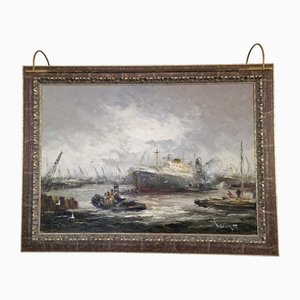
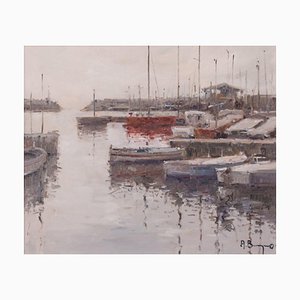
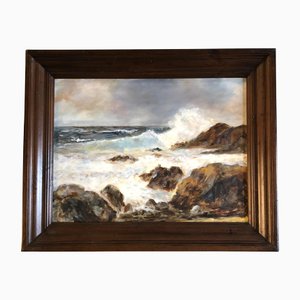
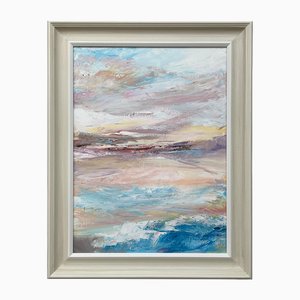


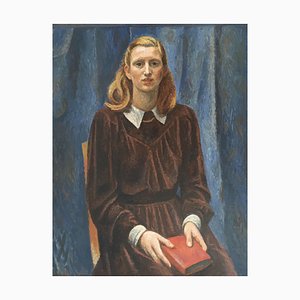
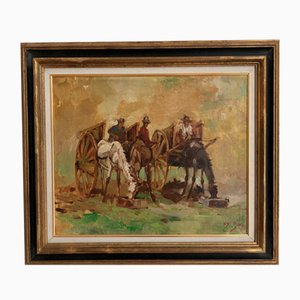
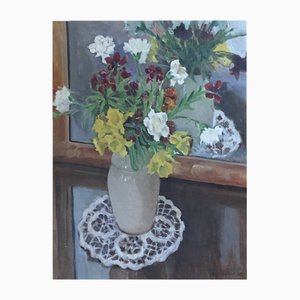

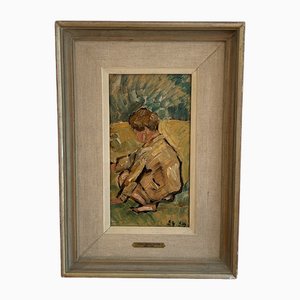
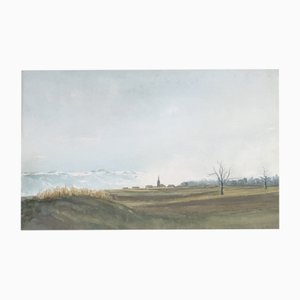
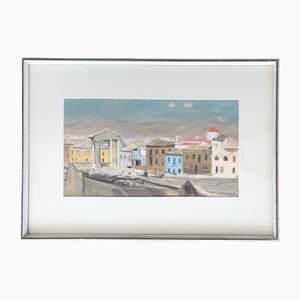
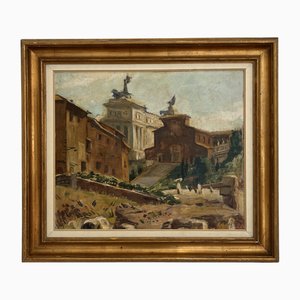
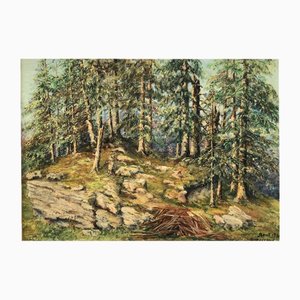
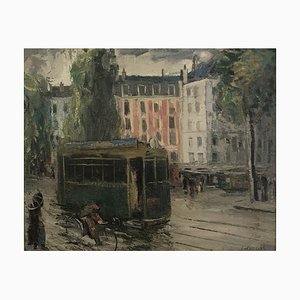
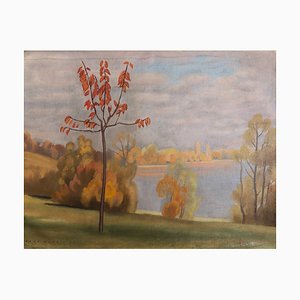
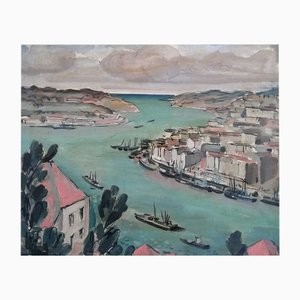

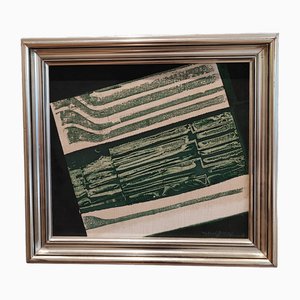
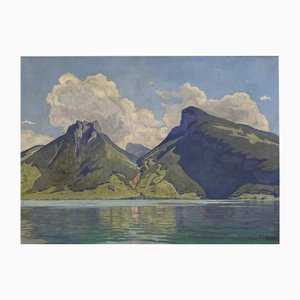
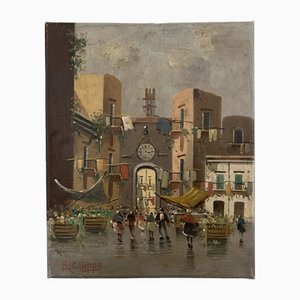

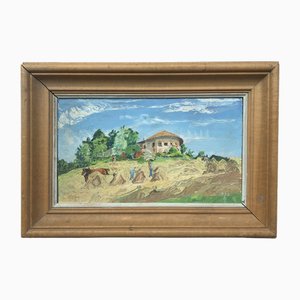
Contattaci
Fai un'offerta
Abbiamo notato che sei nuovo su Pamono!
Accetta i Termini e condizioni e l'Informativa sulla privacy
Contattaci
Fai un'offerta
Ci siamo quasi!
Per seguire la conversazione sulla piattaforma, si prega di completare la registrazione. Per procedere con la tua offerta sulla piattaforma, ti preghiamo di completare la registrazione.Successo
Grazie per la vostra richiesta, qualcuno del nostro team vi contatterà a breve.
Se sei un professionista del design, fai domanda qui per i vantaggi del Programma Commerciale di Pamono